External mounted level sensors for installing on the outside of a liquid storage tank to measure level of tank contents. These level sensors have a screw-in, clamp or bolt-on flange fitting to attach the sensor to a connection port on the external wall of the tank.
Products
 DMP331P Hygienic Flush Pressure Transmitter - Sanitary pressure sensor wth exposed diaphragm with no crevices for high temperatures up to 300 Degrees Celsius in ranges from 100mb up to 40 bar gauge or absolute
DMP331P Hygienic Flush Pressure Transmitter - Sanitary pressure sensor wth exposed diaphragm with no crevices for high temperatures up to 300 Degrees Celsius in ranges from 100mb up to 40 bar gauge or absolute DPT200 Pressurised Tank Level Differential Pressure Transmitter - Pressurised tank liquid level differential pressure cell transmitter for process plant storage.
DPT200 Pressurised Tank Level Differential Pressure Transmitter - Pressurised tank liquid level differential pressure cell transmitter for process plant storage.
 DMK 458 Seawater Low Range Pressure Transmitter
DMK 458 Seawater Low Range Pressure Transmitter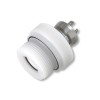 LMK351 High Overpressure Flush Level Transmitter
LMK351 High Overpressure Flush Level Transmitter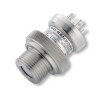 LMK331 Screw-In Ceramic Level Transmitter
LMK331 Screw-In Ceramic Level Transmitter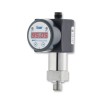 DS200 Combined Hydrostatic Level Switch, Gauge and Sensor
DS200 Combined Hydrostatic Level Switch, Gauge and Sensor
Applications
 Dirty water, sludge & sewerage tank level 400 mbar pressure sensor - Flush ceramic diaphragm pressure sensor for measuring level of a dirty water, sludge & sewerage tank.
Dirty water, sludge & sewerage tank level 400 mbar pressure sensor - Flush ceramic diaphragm pressure sensor for measuring level of a dirty water, sludge & sewerage tank. Low cost 2 metre high diesel tank level sensor with 0-10 volt output - Cost effective level sensor 0 – 2m, media is diesel fuel, output is 0-10V
Low cost 2 metre high diesel tank level sensor with 0-10 volt output - Cost effective level sensor 0 – 2m, media is diesel fuel, output is 0-10V 2m/4m high diesel tank level with ultrasonic sensor - I'm looking for a ultrasonic sensor to measure the level of diesel tank over a range of 0 to 2 metres and 0 to 4 metres
2m/4m high diesel tank level with ultrasonic sensor - I'm looking for a ultrasonic sensor to measure the level of diesel tank over a range of 0 to 2 metres and 0 to 4 metres Ultrasonic level sensor and alarm switch for pressurised vessel emptying - Ultrasonic level transmitter and alarm trip amplifier for empty level sensing of toothpaste in a large holding vessel which is pressurised to force the product out through the filling delivery pipework.
Ultrasonic level sensor and alarm switch for pressurised vessel emptying - Ultrasonic level transmitter and alarm trip amplifier for empty level sensing of toothpaste in a large holding vessel which is pressurised to force the product out through the filling delivery pipework.
 12ft high ink tank screw-in 4-20mA output level sensor
12ft high ink tank screw-in 4-20mA output level sensor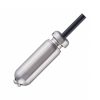 Remote water tank level monitoring via GSM mobile network
Remote water tank level monitoring via GSM mobile network Industrial dishwasher 0-1m 0-10Vdc water level sensor
Industrial dishwasher 0-1m 0-10Vdc water level sensor Automatic fire pump engine 48 inch range 0-10Vdc output diesel tank level sensor
Automatic fire pump engine 48 inch range 0-10Vdc output diesel tank level sensor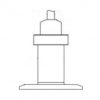 Brewing tank 2000mm range 0-5Vdc output stainless steel 316L beer level sensor
Brewing tank 2000mm range 0-5Vdc output stainless steel 316L beer level sensor Dairy farm 6m high milk storage vat 4-20mA level transmitter
Dairy farm 6m high milk storage vat 4-20mA level transmitter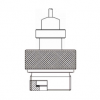 ELPO car paint plant 40ft high wastewater tank level transmitter
ELPO car paint plant 40ft high wastewater tank level transmitter Grease trap waste receiving tank 2m range 4-20mA level transmitter
Grease trap waste receiving tank 2m range 4-20mA level transmitter
- Overground horizontal cylindrical 10ft dia diesel fuel tank level sensor with 10-90% Vs output
- Ferry hull draft monitoring 3 bar absolute 4-20mA output seawater pressure sensor
- 65 inch range 4-20mA output intrinsically safe IBC tote wastewater level transmitter
- 280 inch range 4-20mA output urea tank flush diaphragm level sensor
- 5 metre range high accuracy 4-20mA output non-corrosive liquid level sensor with G1/4 male external fitting
- 140 inch range rangeable 4-20mA output wastewater level sensor and display for external fitting
- 10psig 4-20mA oily wastewater pressure sensor with hi-temp protection for tank level gauging use
- 50cm range 4-20mA water level sensor for hot tub and spa service water tanks
- 6m range 4-20mA output water tank level sensor for external fitting
- 1.5 psig range 4-20mA output freshwater tank fluid level pressure sensor for farming use
- 150cm range 0-10Vdc output bulk milk cooler level sensor with dairy pipe fitting
- 50cm range 0-10Vdc output freshwater level sensor for external fitting
